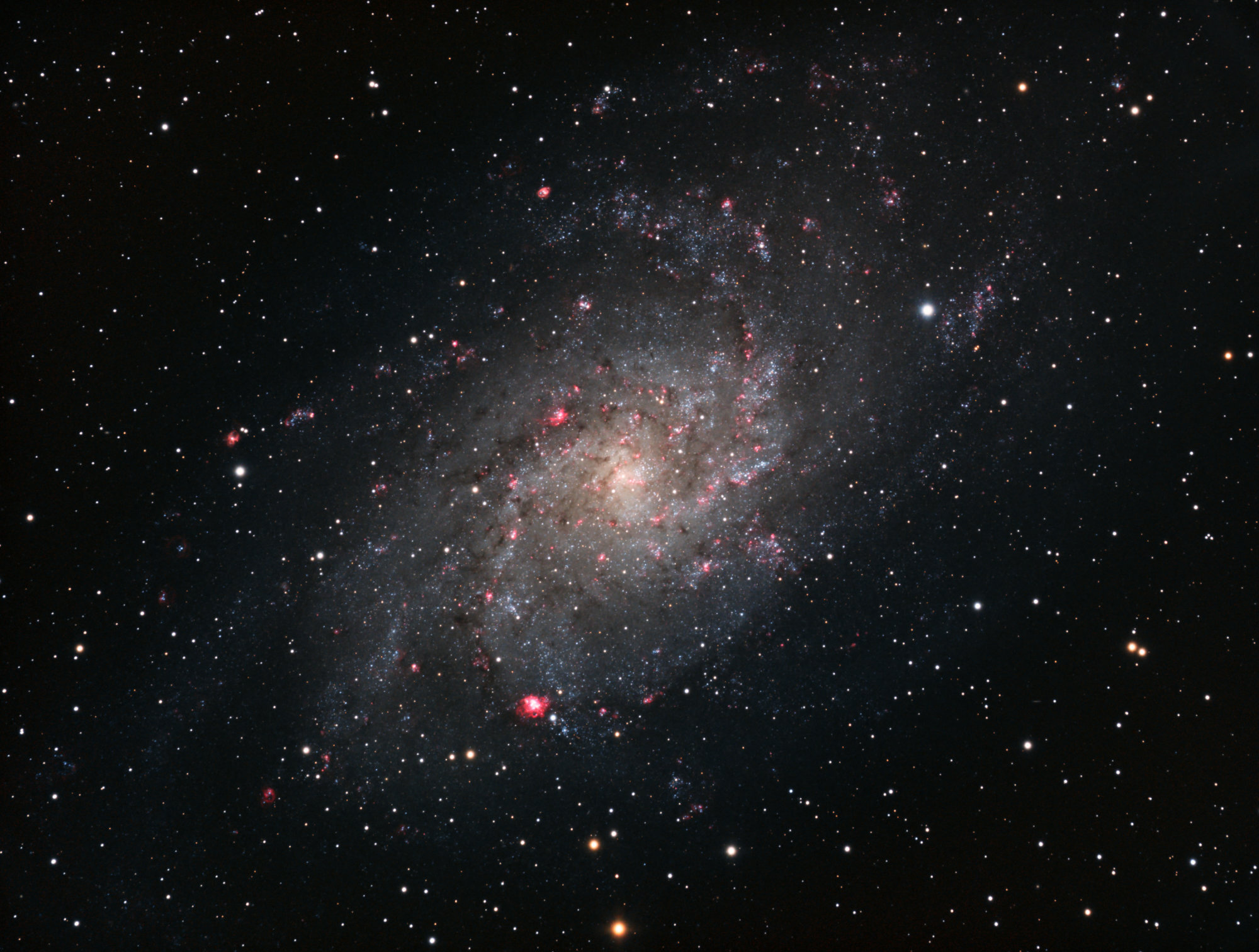
Images
Galactic objects and solar system elements in the form of final images.
Use the filter section on the right to select the objects of interest
Sh2-155 Cave Nebula
An old 2019 dataset of Sh2-155, also known as Cave Nebula, was finally processed to this image in SHO Hubble palette. The nebula itself is only a small object in a much larger region of all sorts of emission, reflection and dark nebulosity.
C/2021-A1 Comet Leonard
Bright comets are seldom appearances in our solar system. Comet Leonard was one of the most striking examples this year. Just days before it would become at its brightest and before it would cross the ecliptic, this image was shot in the early morning hours.
Caldwell 34 - Veil Nebula
The Veil Nebula in HOO was chosen as the first object to photograph using the new RST-135E mount. This ultra-portable mount is super-easy to setup and can be used without counterweights or balancing. First light and lessons learned on a beautiful target.
Sh2-190 - Heart and Soul Nebulae
A new reducer for the FSQ-106 turned the scope into a 380mm at f/3,6 astrograph. Together with the ASI6200MM a perfect combination to photograph the beautiful Heart and Soul Nebulae in narrowband.
Sh2-129 - Flying Bat and Squid Nebula
Recently (2011) the Flying Squid Nebula has been discovered right within the Flying Bat Nebula (Sh2-129). The very weak OIII object is hard to image and with almost 30h of total exposure this has been one of the most challenging objects so far.
Perseïd Meteors
One of the most well-known meteor showers, the Perseïds is visible around August 11-13 every year. This year, in a first attempt to photographing meteors, to photography setups were used to create a composite image of some of the meteors on August 11.
Sh2-229 | C31 - Flaming Star Nebula
IC405 is an interesting combination of both a reflection and emission nebula that emits strongly in H-alpha. The double-star AE Aurigae shines brightly in the middle and illuminates vast clouds of hydrogen gas.
Markarian’s Chain
In the middle of a crowded area of galaxies, known as the Virgo Cluster, one can find a string of Galaxies, commonly known as Markarian’s Chain. Eight galaxies, including the rather bright elliptical galaxies M84 and M86 make up this remarkable object.
M35
A nice combination of two star clusters. M35, an open cluster in the constellation Gemini. Only a few hundred stars. The second cluster is NGC2158. It is much further away and therefore looks much smaller. Its old red stars make a nice contrast with the bright blue stars of M35, creating depth.
IC1805 - Heart Nebula
A large emission nebula in the constellation of Perseus catalogued as IC1805, but mostly known as Heart Nebula, due to its characteristic shape. Processed using the Hubble palette. This is the first image taken with the ASI6200, 62MP full-frame camera.
Sh2-131 - Elephant’s Trunk
This combination of both emission nebula and dark nebula, referred to as NGC1396a has the characteristic form of an Elephant’s trunk. It is part of the much larger nebula NGC1396 in the constellation Cepheus.
M31 - Andromeda Galaxy
The galaxy of all galaxies, M31, or Andromeda galaxy. Our neighbour in the universe, at 2.5 million lightyears from Earth. Here photographed in exceptional high resolution of 100 megapixel.
Sh2-142 - Wizard Nebula
An open cluster of stars with the code NGC7380 is mostly known by their illumination of surrounding gas clouds. This so-called Wizard nebula is located in the constellation of Cepheus.
Comet Neowise
One of the brightest and largest comets in a long time, comet Neowise. A spectacular object, photographed using a regular photo camera with telelens.
Caldwell 12 - Fireworks Galaxy
Face-on view of the intermediate spiral galaxy NGC9646, or Fireworks galaxy, right on the border of the constellations Cepheus and Cygnus.
M94- Croc’s Eye Galaxy
The spiral galaxy M94 in the constellation Canes Venatici with rings of gas of different brightness looks like a big eye in the sky and is nicknamed Croc’s eye galaxy.
M63- Sunflower Galaxy
The spiral galaxy M63 in the constellation Canes Venatici with its beautiful spiral structure at more than 29 million lightyears away from Earth.
M101 | Arp26 - Pinwheel Galaxy
The spiral galaxy M101, or Pinwheel Galaxy, is one of the larger galaxies visible. Its face-on position and its visibility all year round, makes it a great target for any Astrophotographer. Adding H-alpha data to the LRGB image highlights the star-forming areas.




















